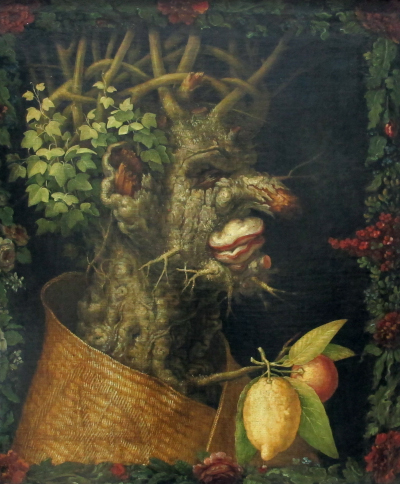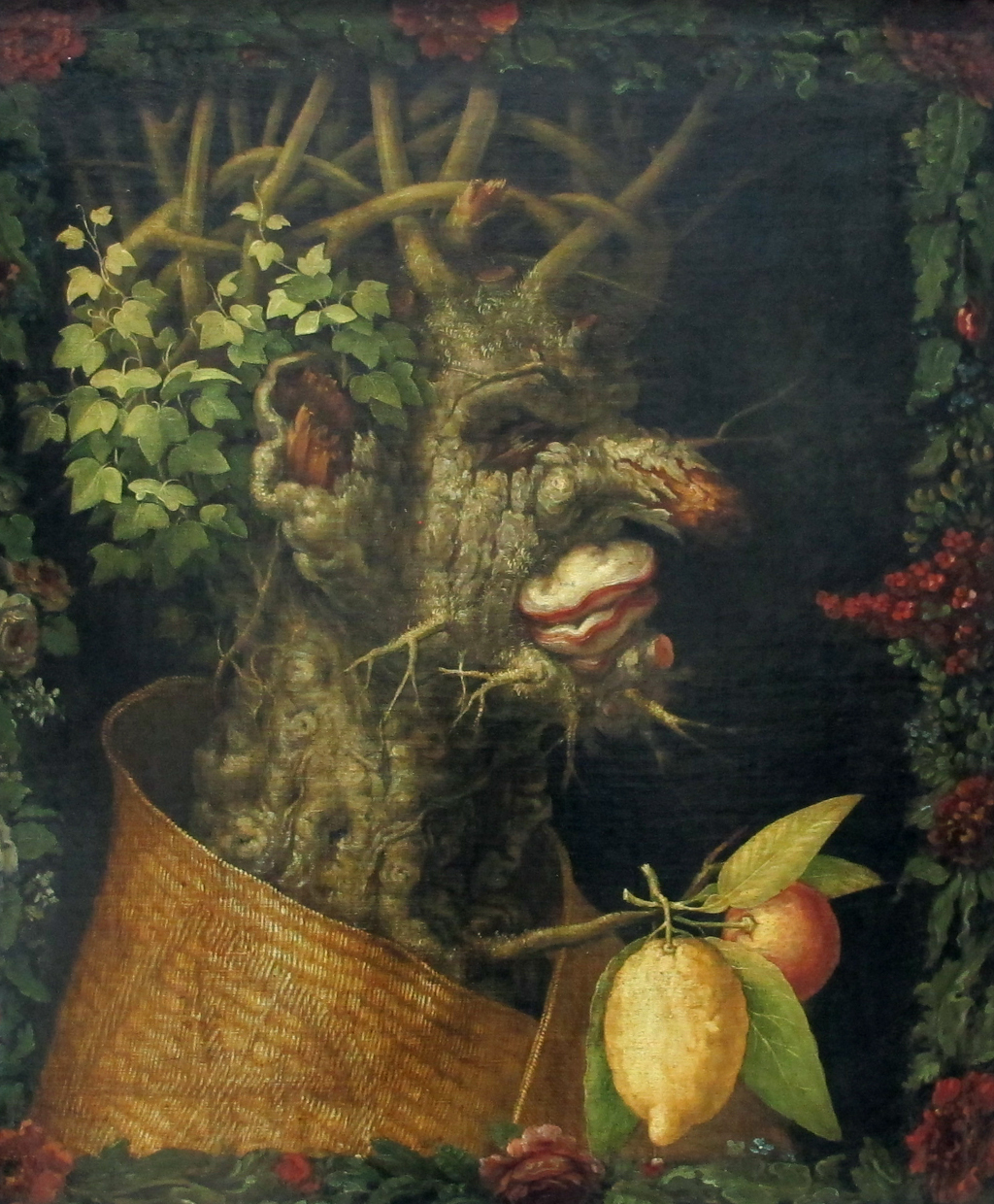Giuseppe Arcimboldo presented two types of heads made of multiple components, the Elements and the seasons. The seasons were four; winter, summer, spring, and autumn. Arcimboldo formed portraits of these seasons by combining the plants associated with growing with a specific season.
Arcimboldo did his Winter painting in 1573. In the Roman calendar, winter was the first season of the year, which is why it was considered the most important among the four seasons. To do this Winter painting, Arcimboldo was inspired by the cold of the winter and the season, which is least lively, and this is evident from this old man taking it as in human form. The painting is made almost entirely using rough barks of trees with the skin having abrasions, unlike the other season’s paintings. This is because winter is not related to producing vegetation.
This winter painting is unique because its composition is from a single tree and its parts rather than separate parts of different trees that create a human form. The artwork is represented as a withered old man, where the swelling of the wood represents the wrinkled and wearing-off skin. The skin is also defined as roughened and knotty. The eye is represented as a small split in the log, and it is black, and the ear is portrayed by a broken small piece of a branch. The nose is a curved stump from a broken branch. The beards appear poorly kept and are composed of small, thin roots and branches. The mouth is represented by two mushrooms that have grown below the nose. The hair is tangled branches at the front while small leaves finish the look at the back part of the head. The leaves crowning his head are not as bright as the leaves of other seasons’ portraits.
The whole structure is conspicuous due to the colors of a lemon and an orange hanging from a branch stretching from the old man’s chest, where citrus is the only fruit in Italy that grows during the winter season. The colors of the fruits give hope that the dull and cold season will end. The man is dressed in a brown coat represented as a straw mat. The mat is wrapped around the shoulders to protect the fruits and provide warmth to help them get through the winter season. However, the original art was an old man wearing a cap with an inscribed M and a crown. The winter artwork is located at the Kunsthistorisches Museum in Vienna.





